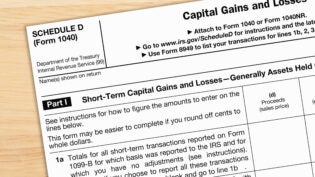
Debra S. just bought Accounting for the Numberphobic; A Survival Guide for Small Business Owners and here’s what she wrote:
“Omigod! Thank you!
Hello Dawn…
I’m writing to thank you for taking the time to actually explain Accounting to me in a way that I was able to understand, relate to, and talk to others about.
I listened to your episode on Entrepreneur On Fire back in early March and downloaded your book as fast as I possibly could.
Personally I have a reading list that is a mile long, but your book skipped to the front of my queue.
What resonated with me was when you were talking about “shark bait” and how the sharks ask the entrepreneurs about their gross margin… and they don’t know how to answer the question.
Bingo! It all clicked and became clear why I needed to read your book. I am so glad that it did!
At any rate, having read your book (and having recommended it to my entire MBA accounting class and professor), I’m wondering if you could explain the finance / math-oriented information behind how a start-up is valued in your same clear and concise way.
Or, better said, to further the analogy using Shark Tank, how the shark bait defines their company’s value to the sharks… and how the valuation becomes a point of contention.
If this is the topic of your next book, please direct me to the purchase link.
Thanks very much, Dawn, for both writing Accounting for the Numberphobic, and for entertaining my question. I’m looking forward to hearing from you!
Best,
Debra S.
Here’s my answer:
Debra,
There are quite a few factors that go into valuing a business, and different types of businesses will focus on different factors. A product business might have patents that are sale able; a service business might have trademarks or proprietary intellectual capital that is sale able. But overall there are two primary variables that any investor worth his/ her salt will be looking at like a hawk:
- Profitability (and profitability growth)
- Free Cash Flow (and multiples of this)
Profitability refers to the bottom line on your net income statement.
If you’ve read Numberphobic, I explain in simple terms how to figure out if you’re earning a profit and if you’re not, what to do to fix this.
If you were running a publicly traded company that is traded on an exchange, you’d have a share price that would be based on how many shares outstanding and how much earnings per share the business generated.
Often, each share sells for a multiple of the earnings per share to indicate positive expectations for profit growth over the next few years.
What drives that? New customers, repeat purchases from existing customers, new product launches (think Apple Computer), new technology, or viral effects that grow loyal customer lists fast (think Instagram).
Profits matter. If your business isn’t showing a profit now, you’ve got to convince an investor that it will, how it will, and when it will! The time frames are very important. Crossing your fingers behind your back is not a strategy.
But profits aren’t the only thing that matter. Cash flow matters profoundly too.
Cash flow is what goes in and out of the business checking account. Investors want to see this grow rapidly. Remember, revenues and cash in are not the same.
Related Article: Death by Growth: How to Manage and Avoid Cash Flow Problems
I go through this in detail in my book in Accounting for the Numberphobic in chapters 5-8.
- Sometimes there’s a time lag.
- Sometimes clients send in a partial payment.
- Sometimes the client goes bankrupt and they can’t pay.
- Sometimes the client takes a discount because they pay within 15 days.
Cash flow and multiples of cash flow are often the most conservative way to value a business.
The spread between what Mr. Wonderful on ABC’s Shark Tank thinks a business is worth and what the business owner thinks it’s worth is usually which of the two variables each person uses to determine the value.
If the business is not showing positive cash flow because the owners are still investing, then Mr. Wonderful will look at Net Income.
He’ll test to see how large Net Income is relative to revenues generated and how fast is it growing.
In almost every case I’ve seen when I’ve watched ABC’s Shark Tank, the business owner uses a multiple of revenues or top line to value the business.
No investor will use this as a measure. Ever.
Why? Because it doesn’t take into account all the operating expenses required to run the business.
Revenues also do not provide visibility on how large Gross Margin is.
You run the business on Gross Margin, not revenues. Chapters 1-3 tell you why in Numberphobic. That’s why the investors on ABC’s Shark Tank always ask what the margins are. They know this.
Every business owner should know it too; cold.
Most don’t.
But now you do! Thanks so much for writing in.
Be sure to tell your MBA colleagues to reach out as well.
I’m thrilled you’re getting so much out of Numberphobic. Did you know it just won Best Business Book of 2015 in Economics from Small Business Trends?
It did.
This article was originally published by Best Small Biz Help
Published: June 4, 2015
2603 Views
2603 Views












